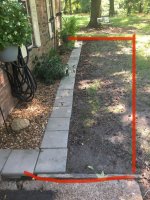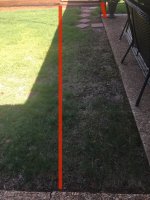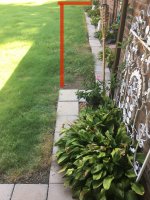- Jun 1, 2018
- 16,000
- Pool Size
- 26000
- Surface
- Vinyl
- Chlorine
- Salt Water Generator
- SWG Type
- Hayward Aqua Rite (T-15)
I am definitely contemplating expanding my flower beds (which are filled with rocks) in some of the troublesome high traffic, damp, or shady areas.
Contender #1 - this area will likely never grow grass thanks to the shade from the house & the evil sweet gum tree so expanding it to line up with the concrete walkway is looking like the best option
so expanding it to line up with the concrete walkway is looking like the best option


Contender #2
The walkway to the pool & no, my deck isn’t aligned with my patio, I’m just thankful its sorta even with my house. The corner near the walkway had a little pool on it years ago - the grass has never been the same since. Also that strip is now shaded by the patio roof that didn’t used to exist. I am imagining rocks with stepping stones here if I can’t get grass (other than nut grass) to grow.


Contender 3: the back flower bed. Very high traffic, path between patio, water hose & garden. The hostas (when they haven’t been burned alive by the sun) get quite big & over take the pavers so we end up walking in the grass. It gets wet alot because of using the hose there. I also got a bit unwieldy with the liquid lawnmower & some spots won’t even grow weeds


Contender #1 - this area will likely never grow grass thanks to the shade from the house & the evil sweet gum tree

Contender #2
The walkway to the pool & no, my deck isn’t aligned with my patio, I’m just thankful its sorta even with my house. The corner near the walkway had a little pool on it years ago - the grass has never been the same since. Also that strip is now shaded by the patio roof that didn’t used to exist. I am imagining rocks with stepping stones here if I can’t get grass (other than nut grass) to grow.

Contender 3: the back flower bed. Very high traffic, path between patio, water hose & garden. The hostas (when they haven’t been burned alive by the sun) get quite big & over take the pavers so we end up walking in the grass. It gets wet alot because of using the hose there. I also got a bit unwieldy with the liquid lawnmower & some spots won’t even grow weeds


